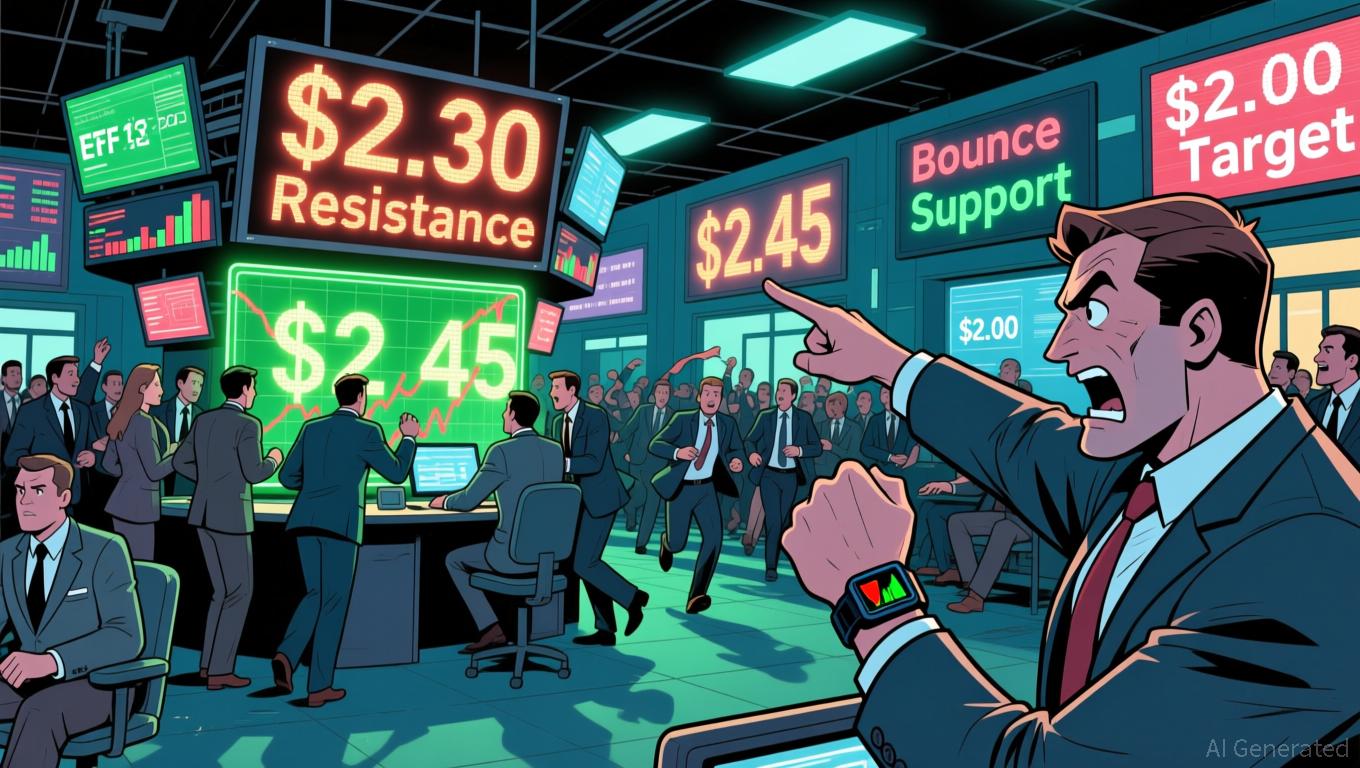Amazon's growing use of AI and recent job cuts spark concerns among employees about job security
- Amazon announced 14,000 corporate layoffs (2025) and a $50B AI infrastructure investment, targeting engineers and white-collar roles to prioritize automation-driven efficiency. - Leaked plans reveal 75% warehouse automation could displace 600,000 jobs, sparking concerns about blue-collar worker displacement despite claims of "extending human capacity." - The $2.5B upskilling initiative aims to prepare 50 million workers for AI-driven shifts, yet critics question if reskilling can offset massive job losse
Amazon’s unprecedented layoff of 14,000 corporate employees and its $50 billion commitment to AI infrastructure have sparked renewed discussions about how automation will reshape employment. The job cuts, which mainly impacted engineers and other white-collar professionals,
Announced in October 2025, these layoffs represent the largest workforce reduction in Amazon’s 31-year history. Nearly 40% of the 4,700 U.S. jobs eliminated were engineering positions
Meanwhile, Amazon Web Services (AWS)

The growing divide between Amazon’s AI-driven goals and its workforce changes is further illustrated by leaked documents indicating plans to automate 75% of warehouse tasks,
The consequences go beyond Amazon itself. As AI becomes more prevalent, companies from Microsoft to Northrop Grumman are wrestling with how to integrate automation while maintaining job stability. Steve O’Bryan of Northrop, for example, expects European defense budgets to remain high even after the Ukraine war, as countries rebuild their arsenals. Likewise, Amazon’s $2.5 billion reskilling program is designed to prepare 50 million people for the evolving job market, though some doubt these initiatives can truly counteract the scale of job loss.
Currently, Amazon’s approach—simultaneously reducing its workforce and investing in AI—mirrors a broader movement in the tech industry. As Bloomberg observes, major tech firms are increasingly focused on speed and efficiency, even as they face growing criticism over the social costs of technological advancement.
Disclaimer: The content of this article solely reflects the author's opinion and does not represent the platform in any capacity. This article is not intended to serve as a reference for making investment decisions.
You may also like
Ethereum News Update: Ethereum Faces $2,500 Threshold—Beginning of a Supercycle or Start of a Major Sell-Off?
- Tom Lee predicts Ethereum's $2,500 support level could trigger a buying frenzy, framing it as a structural inflection point after systematic liquidation. - BitMine's 3.63M ETH holdings and recent $20M WorldCoin investment signal institutional confidence in Ethereum's long-term tokenization potential. - While Dencun upgrades and staking yields bolster fundamentals, macro risks and $1,500 downside remain concerns amid volatile $2,900-$3,115 near-term price action.
Bitcoin Updates: Blockrise's Bitcoin Lending Reflects Growing Institutional Confidence in Regulated Digital Asset Finance
- Blockrise, a Dutch Bitcoin-only firm, launched €20,000 crypto-backed loans after securing EU MiCA regulatory approval, enabling cross-border EU operations. - The service targets corporate clients, allowing Bitcoin collateralization while retaining asset ownership, with 8% interest rates adjusted monthly. - Its semi-custodial model uses hardware-secured vaults and joint transaction authorization, managing €100M in client assets under this structure. - The move aligns with rising institutional demand for B

XRP News Today: XRP's Role in International Transactions Strengthens as ETFs Spark Institutional Movement
- XRP's price nears $2.30 threshold amid ETF-driven institutional interest, with Canary Capital's XRPC ETF attracting $13M net inflows despite broader crypto outflows. - Technical analysis highlights fragile support at $2.03 and critical resistance at $2.45, with breakdowns risking a slide to $1.50 while breakouts could trigger bullish momentum. - XRP's real-world utility gains traction via SWIFT GPI integration, demonstrating cross-border payment efficiency that differentiates it from speculative altcoins

Bitcoin Updates: Tether Faces Scrutiny Over Stability—S&P Issues Caution While Crypto Community Responds
- S&P Global Ratings downgraded Tether's USDT to "weak," citing high-risk Bitcoin exposure and reserve transparency concerns. - Tether criticized the rating as "misleading," defending its 1:1 dollar peg and $135B Treasury holdings as evidence of stability. - The downgrade highlights regulatory tensions as USDT faces scrutiny under new laws requiring stablecoins to be fully backed by low-risk assets. - Despite risks, USDT maintains $184B market cap and $76B daily volume, underscoring its critical role in cr
